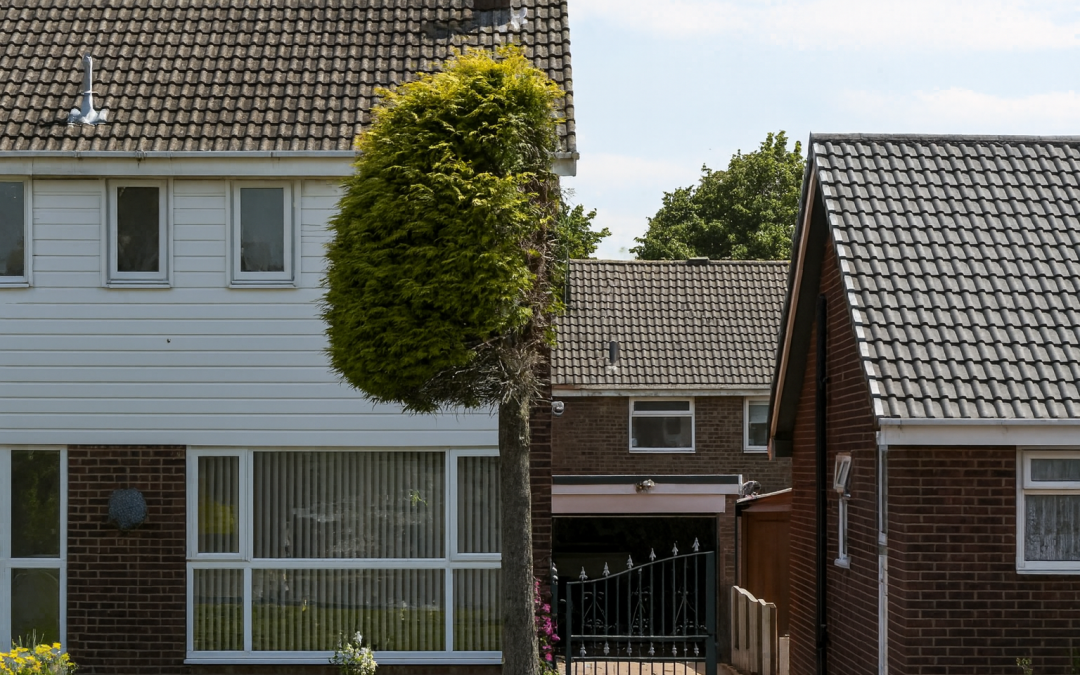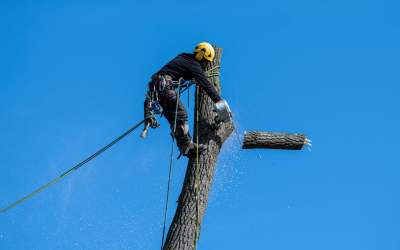Is your neighbour’s tree blocking sunlight in your garden? Are the roots creeping into your foundations? These are the kinds of questions that leave homeowners searching for clear answers. Few things test neighbourly relationships like a tree that drops branches on your car or sends roots under your fence. What starts as a minor annoyance can quickly become a major source of frustration. While our Gold Coast arborists won’t overload you with numbers this time, note that local councils handle thousands of tree-related disputes each year and many could have been avoided with the right knowledge upfront.
Why Overhanging Trees Cause Disputes
You and your neighbour might be talking about:
- Branches stretching over the fence and into your yard.
- Who should pay for trimming back those overhanging limbs.
- Fruit, leaves, and twigs constantly dropping into your backyard.
- Roots creeping under your fence and damaging paths, driveways, or even the house foundations.
- Branches or leaves blocking the sun from reaching your solar panels.
- Trees that could become dangerous in strong winds or storms.
- Trees making it harder for you to relax or fully enjoy your outdoor space.
Check your legal rights before cutting overhanging trees from a neighbour’s land. The law supports you if those trees affect your property or enjoyment of it.
How to Handle Tree Disputes in QLD
1. Resolve Tree Issues the Easy Way
If you’re not already in a heated argument, the best way to start a tree dispute resolution is with a friendly conversation about finding a solution. Resolving the issue, such as a neighbour’s tree damaging your property, while keeping the relationship intact, benefits everyone. It is usually more pleasant, faster, cheaper, and less stressful than taking legal action.
Before continuing that conversation, make sure you understand your legal rights. In Queensland, these rights are set out in the Neighbourhood Disputes Act 2011. You should also determine who the “tree-keeper” is. This legal term refers to the owner of the land where the tree is located, not a tenant. The owner could be an individual, a body corporate, or a company. So, look up the ‘tree-keeper’ by checking out the freehold land register, which you can read about in the Land Title Act 1994.
2. Document the Issue
Having clear and detailed evidence can make all the difference in resolving the matter fairly. Begin by taking high-quality photographs and videos that show the problem from multiple angles. Capture overhanging branches, fallen debris, or anything else that demonstrates the impact on your property.
Keep a written record of all incidents, such as the date branches fell, the type of damage caused, or when roots were first noticed lifting concrete or affecting drainage. If the problem involves recurring issues, log how often they happen.
It’s also wise to save copies of any correspondence you have with your neighbour, whether by letter, email, or text message. This records your good-faith attempts to fix the problem and provides valuable support if you escalate the matter to the council, mediation services, or QCAT.
3. Taking Action on Overhanging Trees
You might ask, “My neighbour’s trees are overhanging my property. Can you do your own pruning? The short answer is yes, in most cases. A neighbour’s trees overhanging your property can be frustrating, and under common law, you have the right to deal with any branches, leaves, or roots that are on your side of the boundary. The only exception is if there is a tree or vegetation protection order in place, which you must follow even if the tree is not on your property.
If you don’t want to simply cut the branches back and would prefer to have your neighbour’s tree removed entirely, falling leaves alone won’t be enough reason. For removal to be considered, the tree must interfere with your use and enjoyment of the property. This could include situations where the tree blocks a view that existed before you bought the property or poses a genuine risk of serious injury or damage.
If discussions with your neighbour fail, put your concerns in writing.
- Send a formal letter outlining the problem and the action you’d like taken.
- For branches overhanging more than 50 centimetres into your property, complete a Form 3 – Notice for Removal of Particular Overhanging Branches. The form gives your neighbour a minimum of 30 days to act.
- If they don’t respond or take action within that time, you can remove the branches yourself or hire a professional arborist to do it.
If you’re still running into an overhanging dead end, you can escalate your tree dispute to the Queensland Civil and Administrative Tribunal (QCAT). They can rule in a way that the law will uphold, but keep this as a final measure to preserve neighbourly relations. If you get a positive QCAT ruling, your neighbour may be ordered to get an arborist to check the tree, write a report and possibly remove it.
Our professional arborists will assess the health and stability of your trees, identify any safety hazards, and recommend the best solutions to prevent damage to your property. We also provide guidance on tree species management, best tips on planting trees, comply with local council regulations, and carry out precision pruning.
Frequently Asked Questions
What is the difference between an arborist and a regular tree lopper?
An arborist is a trained and certified tree care professional who specialises in the health, safety, and management of trees. Arborists can Diagnose diseases, pest infestations, and structural issues. A regular tree lopper, on the other hand, focuses on cutting back or removing branches and trees without formal qualifications in arboriculture.
What should I do with the branches, leaves, and debris after cutting a tree?
Many councils provide scheduled kerbside pickups for branches, leaves, and other garden waste. Be sure to check your local size limits and bundling requirements before placing items out for collection. Another option is to hire a chipper or engage a contractor to mulch the branches. Mulch can be used to improve garden beds, retain soil moisture, and suppress weeds. Leaves and small twigs can also be composted at home to create nutrient-rich soil for your plants.
Are there specific seasons or times of year that are best for tree cutting?
The dormant season (late autumn to winter) is ideal for most deciduous trees as they are not actively growing. If a tree poses an immediate safety risk (e.g., storm damage or large dead branches), removal should be done immediately, regardless of season, as even trees in winter can become hazardous. JC Tree Services’ arborists can advise you on the best timing for your specific trees, considering climate, growth cycles, and local regulations.





